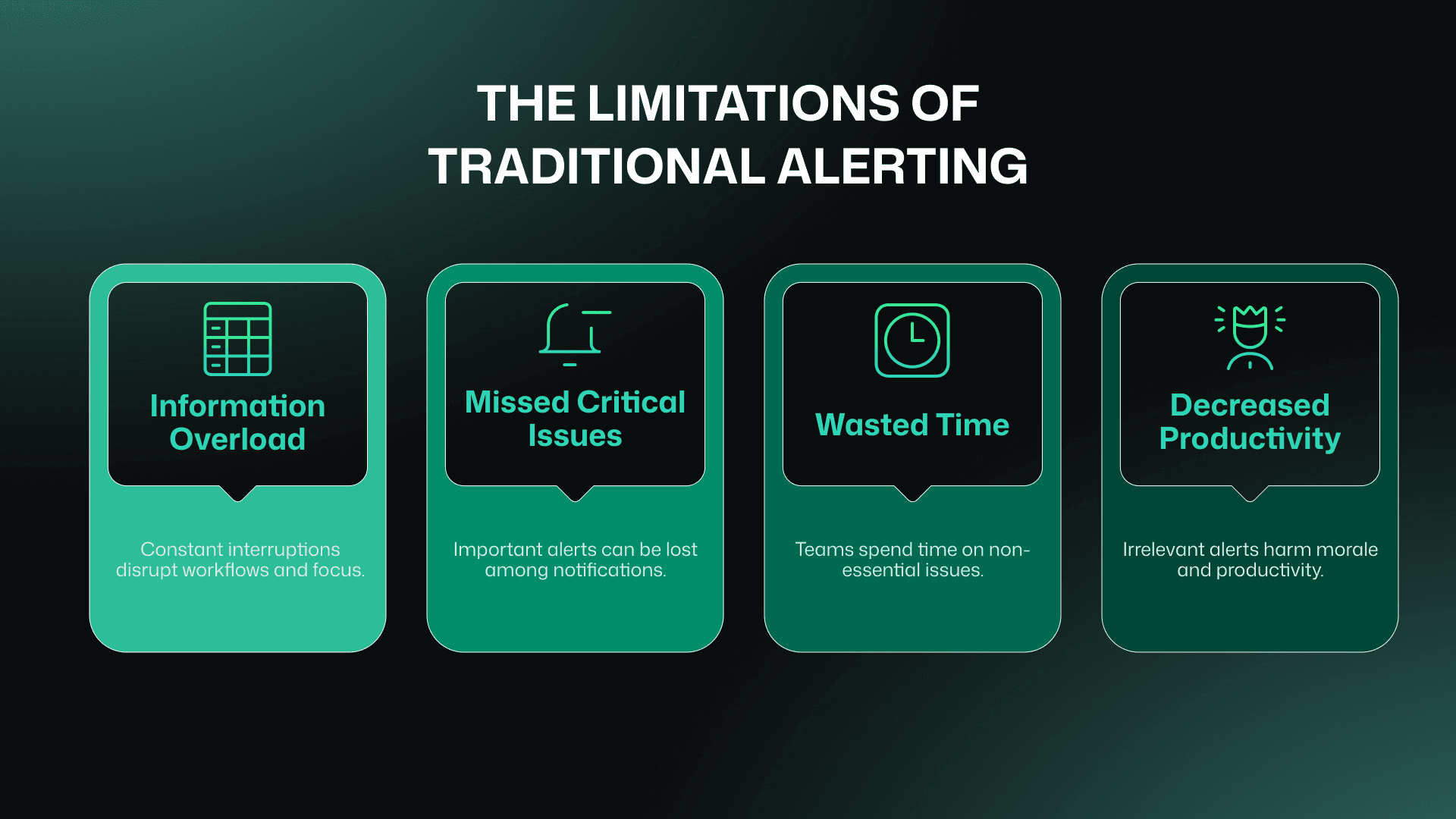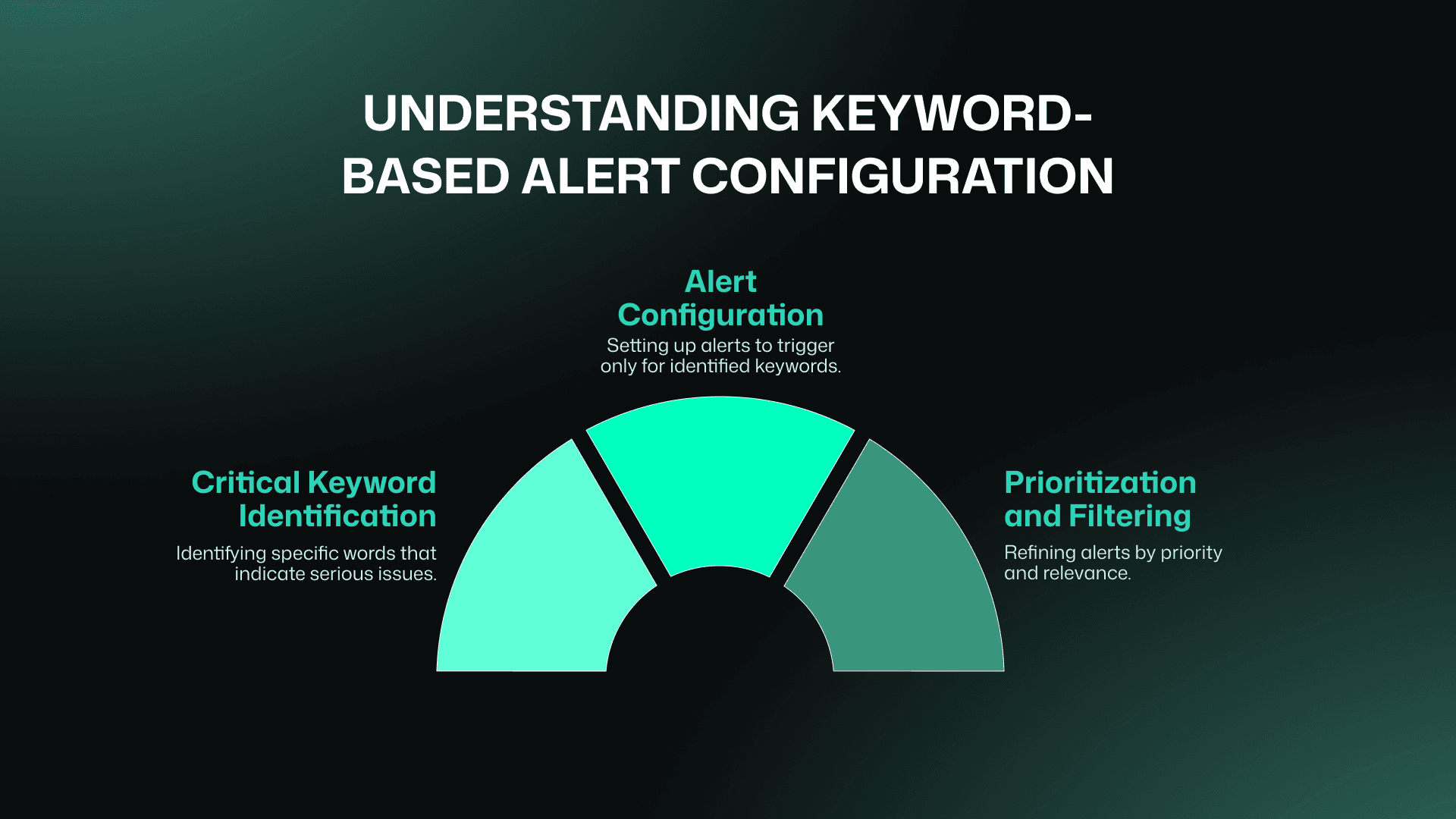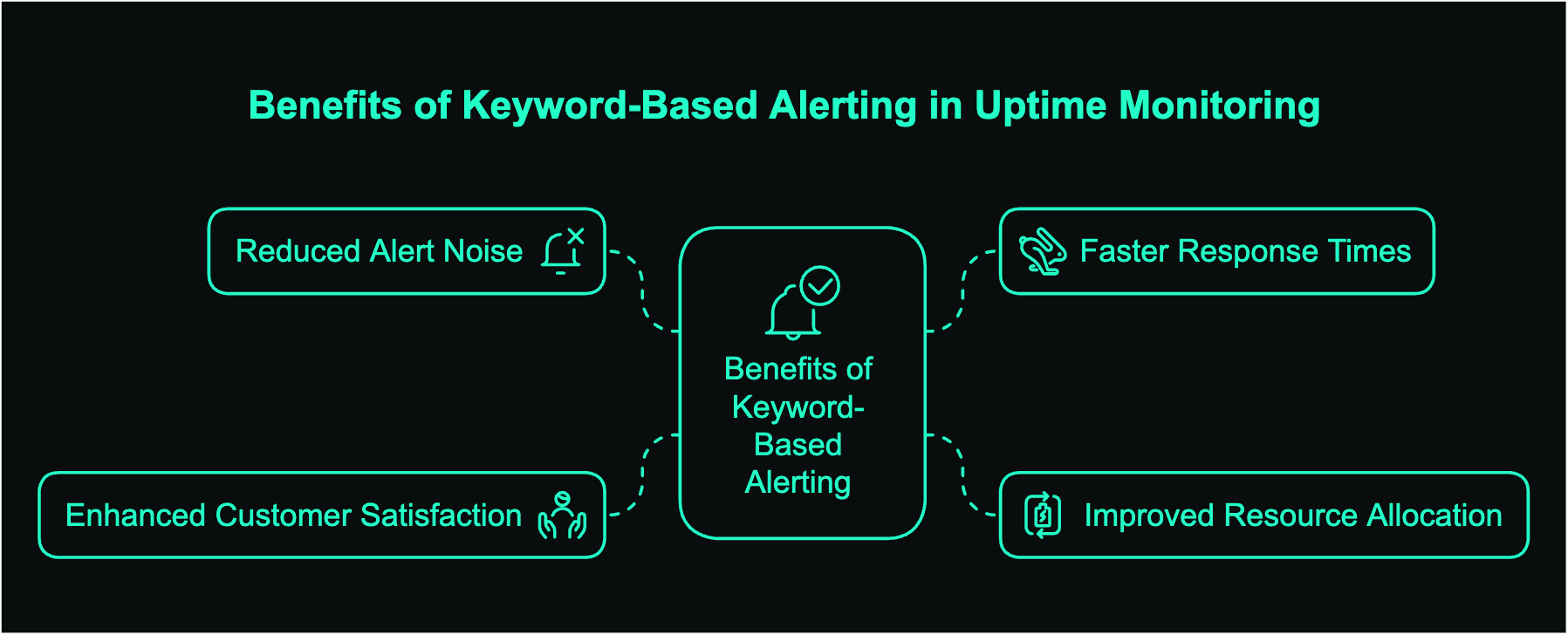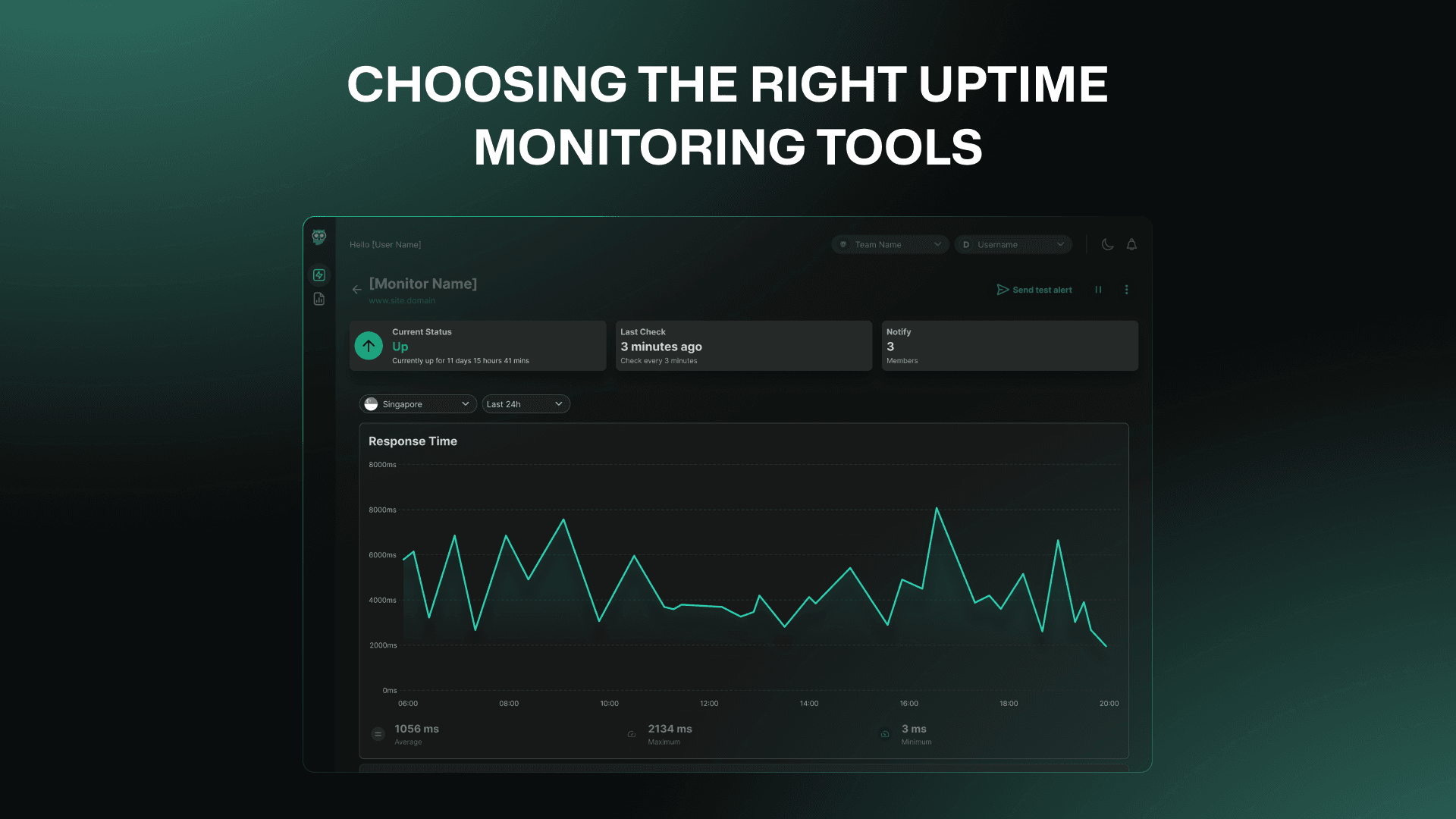Keyword-Based Alert Configuration for Enhanced Uptime Monitoring

Imagine beginning your workday with an influx of emails and text messages, most of which are not relevant. This is a common experience for IT teams that rely on traditional alerting systems. The constant interruptions, the difficulty in identifying critical issues, and the wasted time spent investigating non-essential problems all lead to decreased productivity, lowered morale, and ultimately, a negative impact on customer satisfaction.
This is when alert fatigue becomes a problem. Receiving an excessive number of alerts, many of which are not critical, can overwhelm teams and impede their ability to respond effectively to genuine issues. Effective uptime monitoring requires smarter approaches than simply generating more notifications.
1. The Limitations of Traditional Alerting

Traditional alerting systems often lack the necessary precision to effectively filter out unnecessary notifications. This can lead to the following issues:
Information Overload
Constant interruptions disrupt workflows and make it difficult for teams to maintain focus on essential tasks. Many IT tools create too many alerts without proper prioritization.
Missed Critical Issues
Important alerts can become lost amidst a large volume of less critical notifications, resulting in delayed responses and potential service interruptions. Without proper monitoring uptime strategies, critical systems can fail unnoticed.
Wasted Time and Resources
Teams may spend valuable time and resources investigating non-essential issues, diverting attention from more critical matters. This lack of prioritization impacts productivity and efficiency.
Decreased Productivity
Frequent interruptions and the frustration of dealing with irrelevant alerts can negatively impact employee morale and productivity. Many DevOps teams report that poor server uptime monitoring approaches drain team energy.
These limitations can have a serious impact on business operations. Delayed responses to critical issues can lead to:
- Increased Downtime: Prolonged service outages can severely impact customer satisfaction and revenue. This is a key concern for all businesses implementing uptime website monitoring.
- Damage to Brand Reputation: Downtime can damage a company's reputation and erode customer trust. Rebuilding that trust can take time and resources.
- Financial Losses: Downtime can result in lost revenue, increased customer attrition, and higher operational costs. Mitigating this risk is critical for business continuity.
2. Understanding Keyword-Based Alert Configuration

To overcome the limitations associated with traditional alerting systems, many organizations are implementing keyword-based alert configuration. This approach involves filtering alerts based on specific words or phrases that are indicative of a significant problem—a form of proactive monitoring that prevents alert floods.
Here's how the configuration process typically works:
- Identify Critical Keywords: Begin by identifying specific words or phrases that commonly signify a serious issue. Examples of these keywords include "error", "exception", "failed", "timeout", and specific error codes. These words help identify areas of concern quickly.
- Configure Alerts: Set up your web uptime monitoring system to activate alerts only when these keywords appear in log files, error messages, or other pertinent data streams. This ensures the team is only alerted when a problem arises.
- Prioritize and Filter: Further refine your alerts by setting priority levels and filtering out irrelevant messages. For instance, you might elect to receive alerts only for high-severity errors that are related to specific applications or services. This helps to narrow the focus on key issues.
For instance, if monitoring an e-commerce website, you could configure the system to trigger an alert only when the keyword "out of stock" appears in product inventory logs. This method ensures timely notification of potential stock issues that could affect customer orders.
3. Benefits of Keyword-Based Alerting
By using a keyword-based alert configuration, organizations can experience several key advantages in their uptime monitoring strategy:
Reduced Alert Noise
You only receive alerts for issues that are genuinely critical. This significantly reduces the volume of irrelevant notifications and minimizes unnecessary interruptions. Advanced monitoring uptime tools make this possible through smart filtering.
Faster Response Times
Teams are able to quickly identify and address the most urgent problems, minimizing any downtime, and therefore, the potential impact on the business. This is a key benefit that should be considered for any uptimer solution.
Improved Resource Allocation
You can concentrate your team's attention and resources on the issues that matter the most. This enhances overall efficiency and productivity, letting your IT tools work for you rather than creating additional work.
Enhanced Customer Satisfaction
By minimizing downtime and ensuring consistent performance through effective website uptime monitor solutions, you can improve customer satisfaction and build brand loyalty. This leads to an increase in customer retention.

4. Choosing the Right Uptime Monitoring Tools

Having the correct uptime website monitoring tools is crucial. When selecting a monitoring solution, ensure it offers:
- Real-Time Monitoring: This capability is essential in ensuring that you are always aware of the status of your systems and services, allowing for quick identification of any problem.
- Customizable Alert Configurations: The tool must enable flexible and detailed control over alert settings. This includes keyword-based filtering and prioritization, which allows better incident management.
- User-Friendly Interface: The chosen tool should be user-friendly, with an intuitive interface that makes setting up, managing, and analyzing your monitoring data easy.
- Scalability: Ensure that the tool can accommodate the changing needs of your growing business. This is especially important for companies with evolving structures.
Bubobot offers robust free uptime monitoring that will help to streamline practices and ensure your SLAs are consistently met.
- Real-Time, Unlimited Monitoring: Bubobot offers 24/7 API health tracking to help ensure uninterrupted operations. Continuous performance assessments of this nature provide instant visibility into system health, enabling immediate interventions when necessary.
- Smart Alert System: Bubobot's customizable alert system is designed to prioritize critical issues, and to then send targeted notifications. By focusing on priority resolution workflows, teams can ensure faster response times, and minimize any impact on customer satisfaction.
- Scalable Solutions: With adaptable pricing and a high level of flexibility, Bubobot is suitable for all organizations, regardless of size. A growing startup, for example, might start with a basic monitor uptime package, and then scale up as its customer base and infrastructure expands.
By using a robust proactive monitoring tool such as Bubobot, you can harness the power of keyword-based alert configuration, which can substantially improve uptime, reduce operational costs, and boost overall business performance.
5. Conclusion
In today's digital environment, downtime is simply not acceptable. By using keyword-based alert configurations and web uptime monitoring tools such as Bubobot, you can effectively filter out unnecessary notifications, prioritize critical issues, and ensure that your systems remain available to your customers. The right downtime monitoring approach doesn't just prevent problems—it transforms how your IT operations team works.